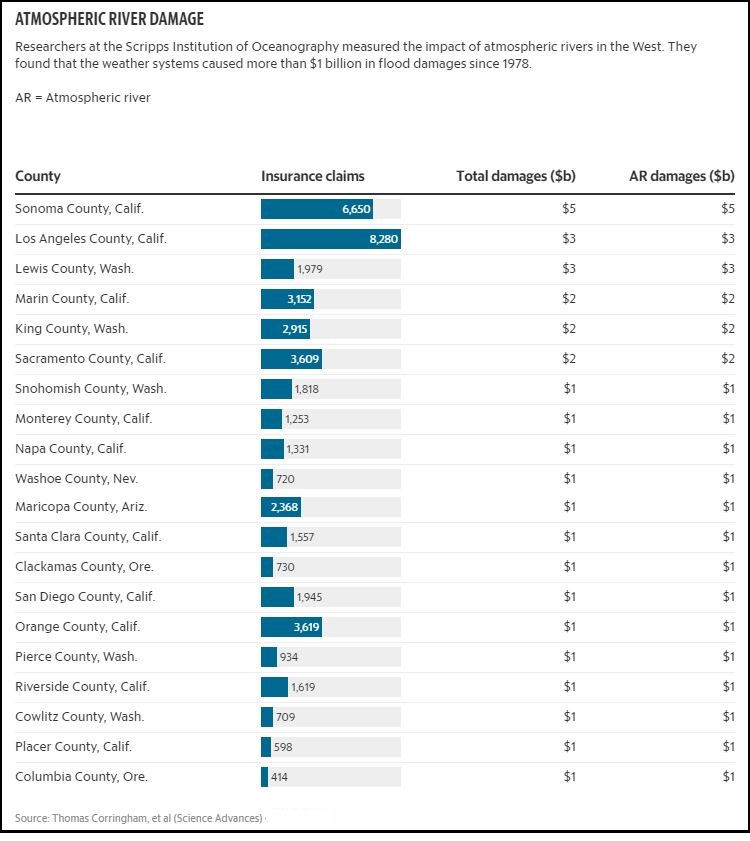
|
|

|
|
| April 19, 2024 |
|
‘Atmospheric rivers’ wreak huge economic damage in California and West, study finds 
LA JOLLA, CA - Atmospheric rivers, the extreme weather events that dump inches of rain on Western states, cause more than $1 billion in flood damage every year. A large share of the damage measured over four decades occurred in 20 counties, including Sonoma, Marin and Sacramento, where the weather system lead to thousands of insurance claims.
Researchers at the Scripps Institution of Oceanography found that as the intensity of the storms increased so did the scale of the damage. The results of the study were published Wednesday in the journal Science Advances. “We found a very clear connection that with each increase in the category we found a ten-fold increase in damages,” said Thomas Corringham, a professor at the University of California San Diego. “So it’s not just as you go from one to five the damages increase linearly; they increase exponentially.” Floods are endemic in some places like Guerneville, a community in Sonoma County where the Russian River frequently crests after heavy deluges from atmospheric rivers. But unlike hurricanes, which have been studied for more than 100 years, the workings and impact of the messy storms are less understood. The term “atmospheric river” was first coined in 1998, Corringham said. “We’ve known for some time that they cause extreme precipitation, caused hydrologic flooding and we’ve known that certain storms have had significant economic impacts but we didn’t know just how much,” Corringham said. Researchers used data from the federal National Flood Insurance Program and the National Weather Service to measure the impact in 11 western states, which included 414 counties. Only 20 counties accounted for nearly 70 percent of the damage caused by atmospheric rivers. The storms caused nearly $51 billion in flood damages over 39 years, they found. Corringham said the findings help inform cities and towns about the impact of the weather events and suggest it could worsen as the population and development increase and the climate changes. “As these storm systems get more intense the risk to our communities increases dramatically,” he said. “I think that strengthens the case for immediate action on climate change and reducing greenhouse gases.” A new area of research The study also used a relatively new facet of atmospheric river research that categorized the strength of each storm in a similar way to tornadoes and hurricanes. The scale ranges from 1 to 5 and has a direct relationship to the degree of damages caused. The scale is still relatively underused, though, but gaining traction with meteorologists, he said. To know that an atmospheric river is coming is one thing but they have different impacts depending on how strong they are,’ Corringham said. “A category 5 atmospheric river is very significant from a meteorological standpoint. We’ve only had 11 over the 40-year time period.” The most destructive category 5 storm occurred in December 1996 in the Central region of California. But strength doesn’t always translate to major damages. If a storm sweeps across parts of Oregon with low populations the impact could be comparatively small, Corringham said. “Being able to communicate this is important and I think we’ll see more use of it but it’s still relatively new.” (Source: The Sacramento Bee) Story Date: December 15, 2019
|